-
Pre-drilling computer analysis could limit fracking-induced earthquakes
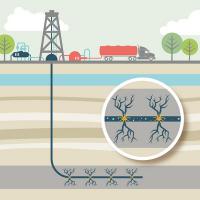
Hydraulic fracturing, also known as “fracking,” is used to break the subsurface rock mass into pieces and is done by injecting high-pressure fluid. While this gives the fluid or gas more paths to reach production wells, it also leads to several environmental problems, one of which is the unwanted shaking of the ground structures caused by the movement of large faults. Using computer analysis prior to drilling could limit seismic events as a result of hydraulic fracturing.
-
-
Solving the problem of “concrete disease”
When bridges, dam walls, and other structures made of concrete are streaked with dark cracks after a few decades, the culprit is AAR: the alkali-aggregate reaction. Also called the “concrete disease,” or even “concrete cancer,” it is a chemical reaction between substances contained in the material and moisture seeping in from outside. AAR damages concrete structures all over the world and makes complex renovations or reconstructions necessary. Researchers have now solved the structure of the material produced in the course of AAR at atomic level — and have thereby discovered a previously unknown crystalline arrangement of the atoms.
-
-
Smart grids better able to withstand climate change challenges
At the end of October 2012, Hurricane Sandy swept across the northeastern United States at speeds of more than 90 mph. Millions of people were left in the dark. In an era of climate change, energy management systems will have to become increasingly robust in order to withstand natural disasters like Sandy – and also floods, wildfires, heat waves, and droughts. The U.S. power supply — with more than 9,200 power plants and nearly half a million kilometers of overhead lines, about a third of a million miles – is already feeling the strain today. Smart Grid technologies have helped to make power grids more resilient to climate change challenges.
-
-
Game for climate adaptation
An MIT-led project takes the adage “think globally, act locally” to heart by demonstrated a new method for getting local citizens and leaders to agree on the best ways of managing the immediate and long-term effects of climate change. The project got local citizens and officials in four coastal towns to engage in role-playing games about climate change tailored to their communities — which in coastal communities may include rising sea levels and increased storm surges that can lead to flooding.
-
-
Blitz spirit needed to meet challenges like climate change: Dr. Hugh Hunt
Today’s engineers will need the kind of drive and determination shown by the great wartime innovators such as Sir Barnes Wallis and Sir Frank Whittle if they are to respond effectively to challenges such as climate change, Dr. Hugh Hunt told the Royal Academy of Engineering on Tuesday. Hunt compared today’s challenge of adapting to future climate change with the imperative to develop new technologies to tip the balance of military capability in favor of the Allies during the Second World War.
-
-
Innovative ways to protect the smart grid
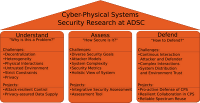
The physical infrastructure of the U.S. electric grid is aging, overburdened, and vulnerable to natural hazards. This is not the bad news. The bad news is that efforts to solve these issues have opened the door to new vulnerabilities. New approaches which transform how energy is produced, delivered, and consumed have created increased reliance on complex data flows, interconnected systems, and sophisticated technologies – that is, the new smart grid. With smarter systems, however, come equally smart hackers. To stay one step ahead of cyberattacks, engineers and scientists are exploring innovative new ways to operate and secure the grid, using the tools of game and control theory.
-
-
Self-healing concrete being tested
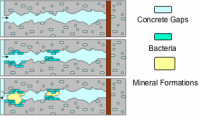
At present, billions of pounds are spent every year maintaining, fixing, and restoring structures such as bridges, buildings, tunnels, and roads. It is estimated that around £40 billion a year is spent in the United Kingdom on the repair and maintenance of structures, the majority of which are made from concrete. Researchers are testing three separate concrete-healing technologies for the first time in real-world settings, with a view to incorporating them into a single system that could be used to automatically repair concrete in the built environment.
-
-
Update issued for southeast Florida regional sea level rise projections
The four-county Southeast Florida Regional Climate Change Compact (Compact) has prepared an update to the regional sea level rise projections used for important planning purposes. Overall, the update includes minor changes to the short-term curves, but a more significant increase in the mid-and long-term projections. The 2015 update estimates sea level rise of 6 to 10 inches by 2030, or 3 to 5 inches above average sea level in 2015. Predictions for the mid-term are between 11 and 22 inches of additional sea level rise by 2060, and longer-term between 28 and 57 inches by 2100.
-
-
New York proposes new sea-level rise projection regulations
New York State Department of Environmental Conservation (DEC) announced last week that to better prepare New York State coastal communities and business owners for extreme weather events like Superstorm Sandy three years ago, DEC is proposing new state sea-level rise projections which will help state agencies and project planners develop more resilient structures. “The sea-level rise projections DEC is proposing today reflect the best science available,” said DEC acting commissioner. “Sea level projections will help state agencies, developers, planners and engineers to reduce risks posed by rising seas and coastal storms over the next several decades.”
-
-
NSF highlights more than forty years of supporting cybersecurity research and education

New report highlights NSF-funded cybersecurity research and education. Today, NSF invests nearly $160 million each year in interdisciplinary research, education, and workforce development help protect national and personal security. This support helps scientists develop the tools, training, and people that will keep the nation safe and maintain online privacy.
-
-
In our Wi-Fi world, the internet still depends on undersea cables
Not many people realize that undersea cables transport nearly 100 percent of transoceanic data traffic. These lines are laid on the very bottom of the ocean floor. They’re about as thick as a garden hose and carry the world’s Internet, phone calls and even TV transmissions between continents at the speed of light. A single cable can carry tens of terabits of information per second. The cables we all rely on to send everything from e-mail to banking information across the seas remain largely unregulated and undefended. Any single cable line has been and will continue to be susceptible to disruption. And the only way around this is to build a more diverse system, because the thing that protects global information traffic is the fact that there’s some redundancy built into the system. But as things are, even though individual companies each look out for their own network, there is no economic incentive or supervisory body to ensure the global system as a whole is resilient. If there’s a vulnerability to worry about, this is it.
-
-
California releases plan for preparing the state for extreme effects of climate change
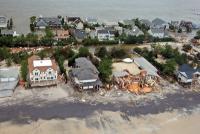
In response to a directive from California governor Edmund G. Brown Jr., the California Natural Resources Agency has been seeking public comment on a draft plan for how California will prepare for and adapt to the catastrophic effects of climate change, including extended droughts and wildfires, rising sea levels and increasingly extreme weather. The draft plan — Safeguarding California: Implementation Action Plans — identifies the state’s vulnerabilities to climate change and details steps that need to be taken across ten sectors including water, transportation, agriculture, biodiversity and habitat, emergency management, and energy.
-
-
Wildfires may double erosion across a quarter of western U.S. watersheds by 2050
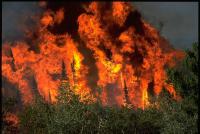
Wildfires, which are on the rise throughout the west as a result of prolonged drought and climate change, can alter soil properties and make it more vulnerable to erosion. A new study shows that the increase in wildfires may double soil erosion in some western United States by 2050, and all that dirt ends up in streams, clogging creeks and degrading water quality.
-
-
Bikini islanders petition to relocate to U.S. as rising seas threaten to swallow their island
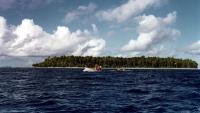
About 1,000 Bikini islanders have petitioned to be relocated to the United States as rising seas threaten to swallow their adopted home. Several hundred islanders were moved from their homes on the Bikini Atoll in 1946 when the United States decided to use it for nuclear weapons tests. In 1948 the islanders were settled on a nearby island in the Marshall chain called Kili. In the last decade, however, climate change and sea level rise have made life on Kili dangerous, as the island has been steadily losing the struggling against huge tides and increasingly ferocious storms.
-
-
Extreme weather events in Chesapeake Bay offer clues for future

For the millions of people who live in its expansive coastal areas, Chesapeake Bay provides an important source of income and recreational enjoyment. To protect the ecosystem and the livelihood of area residents, it is important to assess how climate variability and change will affect Chesapeake Bay’s shallow water ecosystems and water quality.
-
- All
- Regional
- Water
- Biometrics
- Borders/Immig
- Business
- Cybersecurity
- Detection
- Disasters
- Government
- Infrastructure
- International
- Public health
- Public Safety
- Communication interoperabillity
- Emergency services
- Emergency medical services
- Fire
- First response
- IEDs
- Law Enforcement
- Law Enforcement Technology
- Military technology
- Nonlethal weapons
- Nuclear weapons
- Personal protection equipment
- Police
- Notification /alert systems
- Situational awareness
- Weapons systems
- Sci-Tech
- Sector Reports
- Surveillance
- Transportation
Advertising & Marketing: advertise@newswirepubs.com
Editorial: editor@newswirepubs.com
General: info@newswirepubs.com
2010-2011 © News Wire Publications, LLC News Wire Publications, LLC
220 Old Country Road | Suite 200 | Mineola | New York | 11501
Permissions and Policies
Editorial: editor@newswirepubs.com
General: info@newswirepubs.com
2010-2011 © News Wire Publications, LLC News Wire Publications, LLC
220 Old Country Road | Suite 200 | Mineola | New York | 11501
Permissions and Policies
